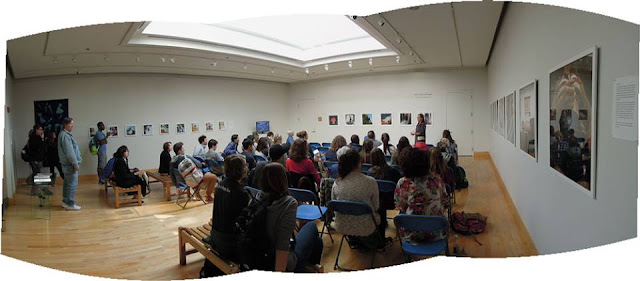composite photograph by Bill Paarlberg
Ms. Behavior and Then Some
McCoy Gallery
A photograph is an image, a record image record color
Nancy Grace Horton’s photographs are deftly emphatic about these features to the point of stretching the image and its location in time to a circumstance that signals a real, albeit odd, present. The women in Horton’s pictures inhabit their spaces according to and against the structures that contain them.
Horton’s women invite or recognition of their circumstances and suggest that such recognition includes our own presence somewhere within the frame. The images in Ms. Behavior and the images in Mad Women each intend possible narratives and as such they place their subjects among us as we invent stories based on the photographic evidence. Our lives touch.
A convergence of circumstances is implied. As viewers we may not recognize these particular women, but we are awakened to something familiar about them, something in the way they respond to objects, to water, to the read tread to
A photograph needs a place of performance, where things meet in time. Where adjustments are made, where strategies for seeing and for being come together. Where something nearly happens.
Artist and Cutator





Comments
Post a Comment